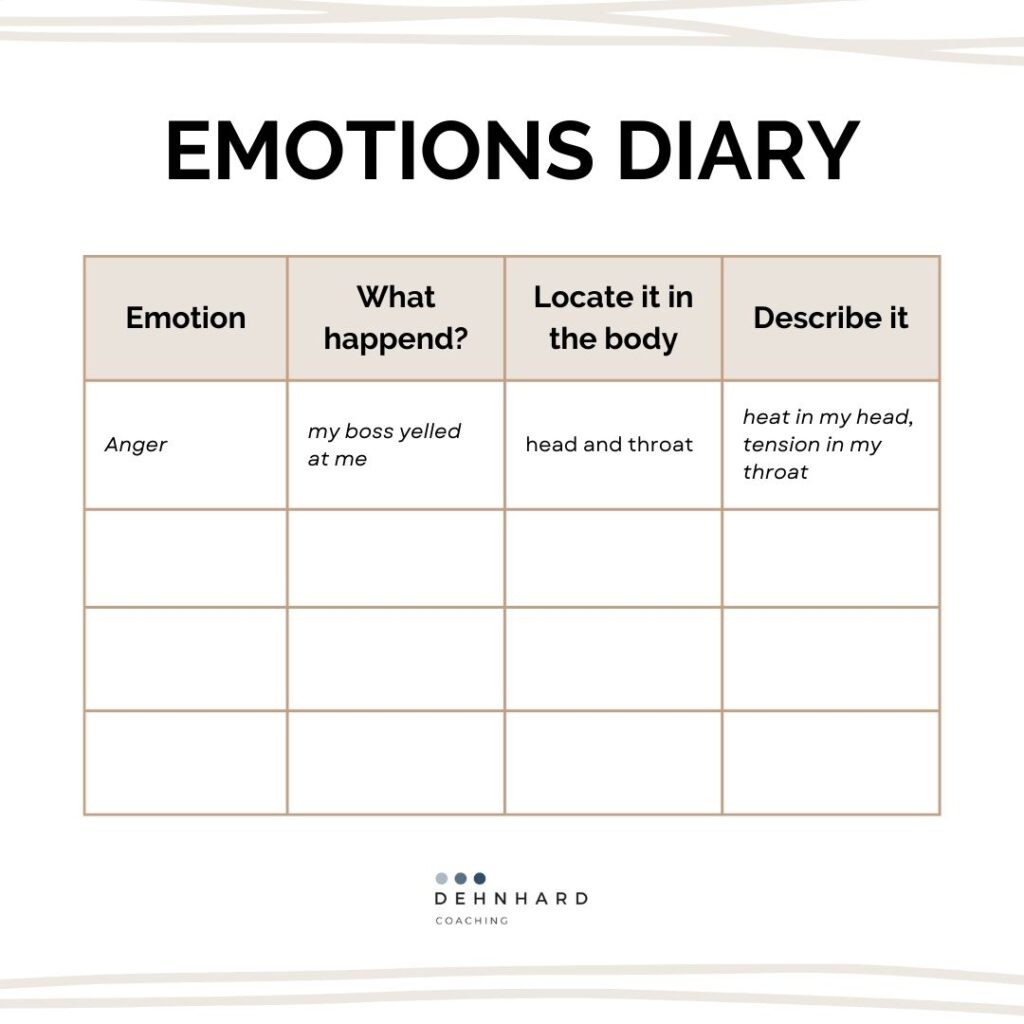Statistics state that only 36% of people in the world can perceive, use, understand, manage, and handle emotions* yet emotions are part of everyone’s life. But how come people, are so disconnected from something ever-present in their life? The answer is simple. Nobody teaches it. In school, there are lessons on math, languages, and science while feeling and managing emotions seems to be the parent’s job. But how can they teach something they never properly learned themselves?
This article is not aiming to answer these questions but rather aiming to bridge the gap to what the school and parents forgot to teach and thus offers a solution to the emotional dark age we are living in. In this simple and detailed guide on how to feel your emotions, you get a step-by-step process and learn about common pitfalls along the journey of learning how to feel your emotions and provides answers for some common misconceptions.
Emotions: the powerful force within you
As of publishing this article, research does not yet have a consensus on a definition of what emotions are. Some state that emotions are mental states others give an abstract definition of consciousness which resonates likely with only a few. To simplify a definition, emotions are psychological states that include subjective, physiological, and behavioral elements in response to internal or external events.
All emotions come as physical sensations in the body which by themselves don’t have a meaning. Only the judgment of a sensation in the body as comfortable or uncomfortable makes it so that we categorize them into good or bad emotions.
Because emotions are such an individual reaction as not all people have the same emotional reaction to an event, they are a powerful messenger of personal truth. For example, if two people see injustice and one person has a strong emotional reaction to that and the other one almost ignores that, the first person’s truth is that they are witnessing a core value of theirs being violated, for example.
Emotions serve as a compass. Something that feels right in the body is usually good to pursue, like a career change. On the other hand negative emotions signals that something is off in either the perception or what is being aimed towards. For example, a person someone considers unlikeable and triggers a negative emotion, is likely not a good person to start a business with.
How to feel your emotions
Feeling emotions is a simple yet uncomfortable process if you have been used to tuning emotions out. In the beginning, it can be overwhelming to feel because emotions are usually very intense and you are not used to that. Over time it will settle.
1. Pause
In a situation where you want to feel your emotions, start with a pause. Take a moment to stop what you are doing and observe what just happened. Objectively look at what triggered an emotional response and investigate what emotion you are sensing?
2. Look for the sensation
When you paused and noticed what emotion is present, look for a sensation in your body. It can be anything from a tiny discomfort to a big uncomfortable sensation. Notice where you can feel it. In your chest, stomach, legs, back, or head for example.
3. Focus
Bring all of your focus and attention to that part of your body and fully experience the sensation. It often helps to close your eyes while doing it to remove all visual stimuli.
4. Describe it
To experience the emotion even deeper, start to describe it. Notice whether it is
– warm or cold
– moving or stagnant
– light or heavy
Then intuitively pick a color this sensation has and imagine the area being covered in that color. Furthermore, you can find anything similar to it to better compare. Like kittens scratching in your stomach, weight on your shoulders, or a stone in your throat.
5. Spend time in the emotion
Without distraction, spend some time with that sensation. Feel it fully by breathing into the body part. Allowing yourself to fully surrender with your exhale, dropping all your resistance, and being present. As soon as you feel relief or need to focus elsewhere again, bring your attention back to your environment, open your eyes, and continue.
Repeat this process as many times as you wish.
Your intention matters
The process described above is in itself quite simple but what makes or breaks it is the intention with which it is done. Going into emotion with the approach of
- It’s not valid
- I shouldn’t feel this
- I want to get rid of this emotion
creates impossible circumstances to feel your emotions. On the other hand, doing this process to understand and observe the emotion and on top of that feeling a sense of compassion and curiosity, almost guarantees success. Think of each the emotion as a treasure chest of a personal truth that is there for you to discover.
Resistance to emotions
Commonly, people have a resistance to emotions entirely or to certain emotions. This usually happens because emotions are experienced as an enemy or a certain emotion such as anger was considered bad growing up.
The problem is that if you shut down one emotion, you weaken all emotions because you need to ignore the bodily sensations to do that. And if you do it for one, you weaken the body awareness entirely. For example, if you don’t allow yourself to feel sadness, you will also shut down happiness on the other hand because to not feel sadness, you need to ignore the sensation in the body. And the more you do that the more body awareness you lose.
To help with that it’s best to start practicing body awareness only. By gently relaxing your body and noticing any shifts and changes, you slowly allow sensation again. Once you cultivate that, you can move on to do the process above.

Guided Meditation Relaxation Body Scan For Stress Relief
Take a journey of profound relaxation with this guided meditation body scan. Experience soothing sounds and guided breathing exercises to help reduce negative thoughts, calm your mind, and bring balance to your life.
Find a Comfortable Position
Begin by finding a comfortable position. Whether you choose to lie down, sit up, or remain in a standing position is up to you…
How to feel your emotions in everyday life
Living an emotionally empowered and intelligent life is not as easy as practicing feeling your emotions once a week. It’s a skill that needs commitment and energy to master. The beauty of feeling emotions is that you can do it anywhere and anytime. In the following some tools to implement emotional awareness into everyday life are outline.
Keep an Emotions diary
If you are disconnected from your emotions, it can be helpful to keep an emotions diary where you check in with how you feel and you write down your emotions at least twice a day. In it you can create a table like below for example:

It is best to keep the diary for 30 days. After that, you will likely be more in tune with your emotions.
Set a check-in timer
In the busyness of life, it’s easy to forget about emotions if they are not very strong. But feeling emotions is as much about subtle as it is about strong emotions. For that reason, setting an alarm on the phone or setting up a reminder at least twice a day can be a good help. Each time the alarm goes or the notification comes, do the process described above.
Emotional return
During the day we feel a multitude of emotions. Each holds an important message. It can be too much to always stay in touch with emotions, especially in the beginning. But as you get better, it will get easier, and feeling your emotions will become a habit.
If that is not yet the case, doing an evening emotional return can be a great tool. To do this you remove all distractions right before sleeping, lay or sit down and focus on the sensations in your body. Start with the most present sensation, spend some time there, and then allow your focus to guide you to the next. With every sensation, practice the state of surrender. When you reached a state of peace you can return or drift off to sleep.
Body relaxation
Negative emotions are usually creating tension in the body. If remembering to feel your emotions is a little hard for you, you can simply notice when your body is tense and then focus on relaxing. Drop your shoulders, relax your jaws, and take a few breaths.
Morning meditation
Starting the day with a morning meditation practice is one of the best ways to start your day connected and set yourself up for an emotionally aware day. Simply taking 5-10 minutes every morning to relax your body and focus on your breath is a good start. You can check out the online shop for some guided meditations or see the video below.
How to feel your emotions: common misconceptions
Whenever the topic of emotions is brought up, all kinds of misconceptions are going around in people’s heads. From emotions make weak to if you are connected to your emotions, you will be weak. In the following, we will address some misconceptions
Emotions are meaningless
In itself emotions are meaningless. That is true. Only the label of good and bad emotions makes an emotion meaningful. But as logical as this sounds, it doesn’t help the normal person to know how to feel your emotions. For that reason, without labeling an emotion as good or bad, simply observing it and the bodily sensations strips away all the negative associations towards emotions.
Emotions are useless
Thoughts and emotions are part of everyone’s life. Making an enemy of them or considering them useless doesn’t help to deal with something ever-present. Emotions always contain an important message and truth that without feeling will be left uncovered. Sometimes an emotion wants to show us a wound from the past that needs to be healed while sometimes it shows us that something about the way we act needs to change.
Emotions make weak
Emotions only make someone weak if they are being avoided. In reality, no one can avoid or turn off emotions. One can consciously decide to not feel them but that doesn’t make them go away.
Suppressed emotions often come out in impulsive and uncontrollable ways such as furious rage, deep depression, or uncontrollable tears. And that is what creates weakness and ultimately powerlessness. Feeling and observing emotions makes a person stronger as they are consciously in charge of their emotions and their responses.
Summary
Emotions are an unavoidable and crucial part of life. Someone is only as strong as their relationship with emotions. Learning how to feel your emotions is about practicing a simple process and cultivating mindfulness throughout the day.
* https://blog.gitnux.com/emotional-intelligence-statistics/






